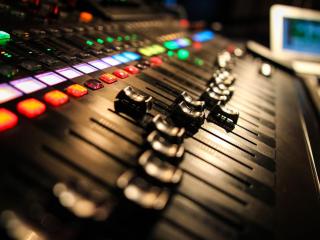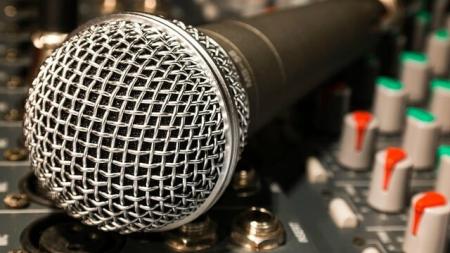
If you asked the average person what a microphone does during the audio production process of filming, they would probably answer that they pick up sound. And, while this is true, anyone who has attended an audio engineering school in Maryland will tell you that there are many types of microphones, each with different features and functions.
While all microphones pick up surrounding audio that is being recorded, it takes a specialization in audio engineering to understand that each microphone type has a particular pickup pattern to pick up sound in a specific way. And, since your film is only as good as your audio, anyone enrolled in an audio production school should pay close attention to the different microphone types and their pickup patterns.
Today we will look at the major types of microphone pickup patterns that any good videographer should know. This way, when you find yourself on set for the first time as an audio engineer graduate, you will already be one step ahead of most of your novice colleagues breaking into the industry.
Major Microphone Pickup Patterns
Microphones are typically broken into two major (sometimes three) types of pickup patterns before they are described on an individual level. These categories represent the microphone’s sensitivity to various sounds and the direction from which the sound is coming. They play a large role in determining which type of sound quality you will receive during an audio recording.
Omnidirectional Microphone Pickup Pattern
These microphones pick up sound equally from all directions. The sound is picked up in a circular pattern so that the front, sides, and back of the microphone can pick up sound clearly.
Though this can be helpful at times, and they are the most flexible microphone type to use, professional videographers usually don’t need this much audio picked up during filming. In fact, oftentimes this microphone pattern causes excess white noise to pick up from the surrounding area and can lead to poor audio quality.
Top Features of Omnidirectional Microphones
- These are great for use during interviews when a microphone is fixed but the subject creating audio is moving.
- Ambient sound is easily picked up using an omnidirectional microphone.
- They are sometimes used on set while filming if an actor needs to move their head. This way the crispness of the voice will not be lost.
Unidirectional Microphone Pickup Pattern
Unidirectional microphones pick up sound from one predominant area. They pick up audio only from the direction that the barrel of the microphone is pointing.
A great example of a microphone that uses a unidirectional pickup pattern is a boom pole. With a microphone mounted on the end of the pole, the boom pole is held over the subject creating audio that a videographer wants captured.
Top Features of Unidirectional Microphones
- They offer great range.
- Unwanted outside noise is rejected well to avoid dialogue distractions.
Bidirectional Microphone Pickup Pattern
This third category is not always mentioned as a major microphone pickup pattern, though it still exists. And, if you take classes from a qualified audio engineering school, you will learn everything there is to know about microphones and their pickup patterns ‒ bidirectional patterns included. This will help set you apart from the rest of the videographers vying for business.
In any case, these microphone types capture audio from two opposite directions. The top and bottom sound direction are suppressed.
Top Features of Bidirectional Microphones
- An interview with two people facing each would require this type of microphone pickup pattern.
- Music artists recording in a studio can utilize this pickup pattern type as well to capture audio in a specific sounding way.
Microphone Pickup Pattern Sub-Categories
Each microphone pickup pattern will ultimately fall within one of the three above-mentioned major categories. However, there are plenty of specialized microphones with different pattern types that perform certain functions. Let’s take a look.
Cardioid Microphones
This slightly omnidirectional microphone type has a pickup pattern that is heart-shaped. These microphone types capture audio mostly from the front of the microphone, though the noise coming into the sides and back is not completely suppressed. This is one thing videographers must be aware of. Too much ambient noise leaking in can ruin a good shot with its excess sound.
These are excellent general use microphones. In fact, most handheld mics are usually this kind. In addition, since they do not suppress sound in any one direction completely, the ambient noise picked up can sometimes add to the quality of film you are working on depending on the nature of the scene.
Hypercardioid Microphones
This unidirectional microphone is related to the cardioid. With a more exaggerated front-end pickup pattern than the cardioid, this microphone type eliminates almost all sound from the sides and back. Most often, these pickup patterns are used while recording instrumental audio.
Hypercardioid microphones are typically long and thin and are sometimes referred to as shotgun mics. Shotgun mics are typically used for recording dialogue on set due to their ability to accept audio directly on axis with the microphone while still cancelling sound on the sides.
The problem with these pickup patterns is that without any ambient noise, the audio can sometimes sound unnatural. In addition, the microphone must be directly pointed at the subject creating audio at all times to prevent fading in sound quality. These are all things a good Maryland audio engineering school will teach you so that you can become a successful videographer.
Figure 8 Microphones
This microphone type falls under the bidirectional category. Their pickup patterns are just as their name implies – in a figure eight. They pick up sound on either side equally while cancelling the opposing sides’ ambient noise.
These are great for in-studio broadcast interviews when the subjects are sitting on either side of the microphone. This sharing of one microphone solves the problem of having one person sound loud and clear and the other sounding muffled and low due to audio restrictions.
Another great place to use a figure 8 microphone is when your client is recording a podcast for their business.
Final Thoughts
As a future audio engineer, it is important you learn the key differences between microphone types and their pickup patterns. In addition, your knowledge must go deeper than simply the shape of the microphone. This is not always a good indicator of what type of pickup pattern the microphone has, and can make for some poor audio if you choose the wrong mic based on looks alone.
If you are interested in attending one of the top audio production schools in Maryland because you want to become the next big videographer, call The Sheffield Institute for the Recording Arts. Our industry professionals instruct you in the art of audio engineering and all of the details and considerations involved in making an exceptional production.
In addition, we give our students specialized hands-on training with all of the best equipment being used right now to get a true feel of what it would be like out in the field. Contact us today; your dream is awaiting realization.



